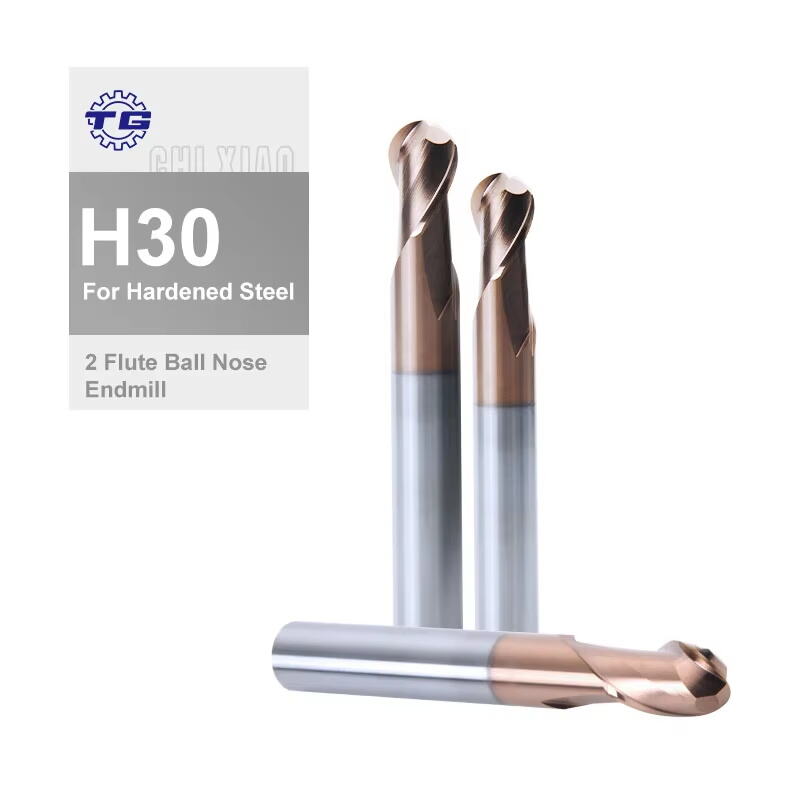Understanding Cutting Tools in Modern Machining
In the world of machining and metalworking, selecting the right cutting tool can make the difference between a masterpiece and a mishap. Two of the most commonly used cutting tools are end mills and drill bits, each designed for specific applications and offering unique capabilities. While they might appear similar at first glance, these tools serve distinctly different purposes in the machining process.
The fundamental difference lies in how these tools interact with the material being cut. Understanding these differences is crucial for machinists, engineers, and anyone involved in manufacturing processes to ensure optimal results and tool longevity.
Basic Characteristics and Design Features
End Mill Design and Construction
End mills are sophisticated cutting tools characterized by their multiple cutting edges and flat or contoured ends. They typically feature two to eight flutes running along their length, with each flute carefully engineered to optimize chip evacuation and cutting efficiency. The cutting edges extend both on the end face and along the tool's periphery, allowing for side cutting and plunging operations.
These tools come in various materials, including high-speed steel (HSS), cobalt steel, and carbide, each offering different levels of durability and performance. The flute design can be straight, spiral, or helical, influencing chip removal and cutting characteristics.
Drill Bit Configuration
Drill bits, in contrast, are primarily designed for creating holes by cutting axially into the workpiece. They feature two main components: the point, which initiates the cut, and the body, which includes the flutes for chip evacuation. The point geometry typically includes a chisel edge and cutting lips, optimized for penetrating material straight down.
Most drill bits have two flutes, though specialized versions may have more. The flute design is specifically engineered to efficiently remove material while maintaining hole straightness and surface finish. Unlike end mills, drill bits generally don't perform well in lateral cutting operations.

Operational Capabilities and Applications
End Mill Versatility
End mills excel in their versatility, capable of performing multiple types of cuts. They can create slots, pockets, profiles, and even complex 3D surfaces. When used in CNC machines, end mills can follow intricate toolpaths, making them essential for precision manufacturing and detailed work.
These tools can cut in any direction - axially, radially, or in combination - making them ideal for operations like:
- Face milling flat surfaces - Creating contoured shapes - Cutting slots and channels - Performing helical interpolation for larger holes - Engraving and detail work
Drill Bit Specialization
Drill bits are specialized tools designed primarily for creating holes quickly and efficiently. Their strength lies in their ability to plunge straight down into material, creating precise, cylindrical holes. While they excel at their primary function, they are limited in their ability to perform other cutting operations.
Common applications for drill bits include:
- Creating pilot holes - Through-hole drilling - Spot drilling - Center drilling - Deep hole drilling with specialized geometries
Material Considerations and Tool Selection
Choosing the Right End Mill
Selecting the appropriate end mill depends on various factors including the workpiece material, desired surface finish, and the complexity of the machining operation. For instance, aluminum typically requires fewer flutes and different coating options compared to steel. The choice between carbide and HSS end mills often comes down to the balance between tool life, cost, and cutting parameters.
End mill selection also involves considering:
- Number of flutes needed - Coating requirements - Corner radius specifications - Overall tool rigidity - Required cutting parameters
Drill Bit Material Selection
Drill bit selection focuses more on the specific hole-making requirements. Factors such as hole depth, diameter accuracy, and material properties play crucial roles. Specialized coatings and geometries are available for different materials and applications, from wood to hardened steel.
Key considerations include:
- Point angle requirements - Length-to-diameter ratio - Surface finish specifications - Tool material and coating selection - Coolant requirements
Performance Optimization and Best Practices
Maximizing End Mill Efficiency
To achieve optimal performance with end mills, proper cutting parameters and tool paths are essential. This includes maintaining appropriate speeds and feeds, ensuring proper chip evacuation, and using suitable cooling methods. Programming considerations for CNC operations must account for tool engagement and material removal rates.
Best practices include implementing proper ramping techniques, avoiding full-width cuts when possible, and maintaining consistent chip loads. Tool life can be significantly extended through careful attention to these details and proper maintenance procedures.
Optimizing Drill Bit Performance
Successful drilling operations require attention to factors such as proper speed and feed rates, adequate cooling, and appropriate pilot hole sizing when necessary. Peck drilling cycles can help with chip breaking and evacuation in deeper holes, while proper alignment ensures hole straightness and accuracy.
Regular inspection and maintenance of drill bits, including proper sharpening when applicable, helps maintain optimal performance and extend tool life. Understanding and implementing these practices leads to more efficient operations and better results.
Frequently Asked Questions
Can end mills be used for drilling operations?
While end mills can create holes through helical interpolation or plunging, they are generally less efficient than drill bits for straight hole-making operations. They are better suited for complex milling operations where additional flexibility is required.
What determines the number of flutes needed in an end mill?
The number of flutes is determined by factors including material type, cutting speed requirements, and chip evacuation needs. Softer materials like aluminum typically use fewer flutes (2-3) for better chip clearance, while harder materials might use more flutes (4-8) for improved surface finish.
How do you choose between carbide and HSS tools?
The choice between carbide and HSS depends on factors including budget, material being cut, and machine capabilities. Carbide offers higher performance and longer tool life but is more expensive and requires more rigid setups, while HSS is more forgiving and cost-effective for lighter applications.


